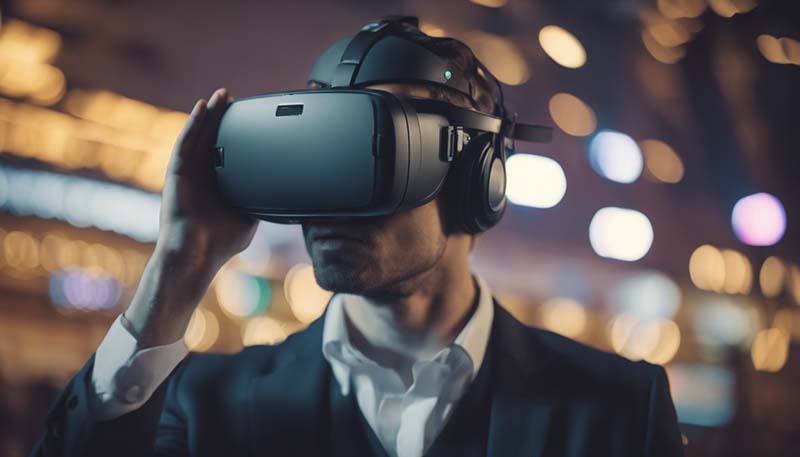The Role of Virtual Reality in the Gig Economy
The Role of Virtual Reality in the Gig Economy
Virtual Reality (VR) technology has been making waves in various industries, and its impact on the gig economy is no exception. This article explores the role of VR in shaping the future of gig work, from enhancing job opportunities to redefining the way freelancers and businesses interact.
Introduction to the Gig Economy
The gig economy is a labor market characterized by the prevalence of short-term contracts or freelance work as opposed to permanent jobs. It has been growing rapidly in recent years, driven by technological advancements and changing workforce preferences. The gig economy offers flexibility and autonomy to workers, while businesses benefit from a more agile and cost-effective workforce.
The Rise of Virtual Reality
Virtual Reality is a computer-generated simulation of a three-dimensional environment that can be interacted with by a person using specialized equipment, such as VR headsets. VR has the potential to revolutionize the way we work, learn, and communicate. It offers immersive experiences that can simulate real-world scenarios, making it an ideal tool for training, collaboration, and remote work.
VR in Gig Work: Opportunities and Challenges
The integration of VR technology into the gig economy presents both opportunities and challenges for gig workers and businesses alike. Here are some key points to consider:
Advertisement
Opportunities
- Expanded Job Opportunities: VR can create new job categories, such as VR content creators, virtual environment designers, and VR trainers.
- Enhanced Training and Skill Development: VR can provide realistic and immersive training experiences, helping gig workers develop new skills or enhance existing ones.
- Improved Collaboration: VR can facilitate better collaboration among remote workers, simulating face-to-face interactions and improving team dynamics.
- Access to Global Markets: VR can help gig workers access global markets, as it allows them to work in virtual environments that are not limited by geographical boundaries.
Challenges
- Technological Barriers: The high cost of VR equipment and the need for high-speed internet connections can be a barrier for some gig workers.
- Learning Curve: Adapting to VR technology may require a significant learning curve, particularly for those who are less tech-savvy.
- Health and Safety Concerns: Prolonged use of VR can cause discomfort or motion sickness in some individuals, which may affect productivity.
- Security and Privacy Issues: The use of VR in the gig economy raises concerns about data security and privacy, as sensitive information may be transmitted through virtual environments.
Case Studies: VR in Gig Work
Let's explore some real-world examples of how VR is being used in the gig economy:
1. Virtual Reality Training for Gig Workers
Companies like Walmart and Amazon are using VR to train their gig workers in various tasks, such as warehouse operations and customer service. This approach allows workers to learn in a safe and controlled environment, reducing the risk of accidents and improving efficiency.
2. VR-based Freelance Platforms
Platforms like VR Workforce and Virtual Desktop are enabling gig workers to offer their services in a virtual environment. These platforms allow freelancers to showcase their skills and connect with clients in a more immersive and interactive way.
3. VR for Remote Work and Collaboration
Virtual Reality can help gig workers who are based in different locations to collaborate effectively. Tools like AltspaceVR and VRChat allow users to hold meetings, workshops, and social events in a virtual space, simulating the experience of being in the same room.
The Future of VR in the Gig Economy
As VR technology continues to evolve, its role in the gig economy is likely to expand. Here are some potential future developments:
- Increased Adoption: As VR technology becomes more affordable and accessible, we can expect to see a wider adoption of VR in the gig economy.
- Integration with Other Technologies: VR is likely to be integrated with other emerging technologies, such as artificial intelligence and the Internet of Things (IoT), to create more sophisticated and efficient gig work solutions.
- Regulation and Standardization: As VR becomes more prevalent in the gig economy, there will be a need for regulation and standardization to address issues related to security, privacy, and fair labor practices.
- Personalized Gig Work Experiences: VR can enable personalized gig work experiences, tailoring virtual environments and tasks to individual workers' preferences, skills, and needs.
Conclusion
The gig economy and Virtual Reality are two disruptive forces that are reshaping the way we work. As VR technology becomes more integrated into the gig economy, it has the potential to create new opportunities, improve efficiency, and enhance the overall gig work experience. However, it also presents challenges that need to be addressed to ensure a fair and sustainable gig economy for all.

Comment